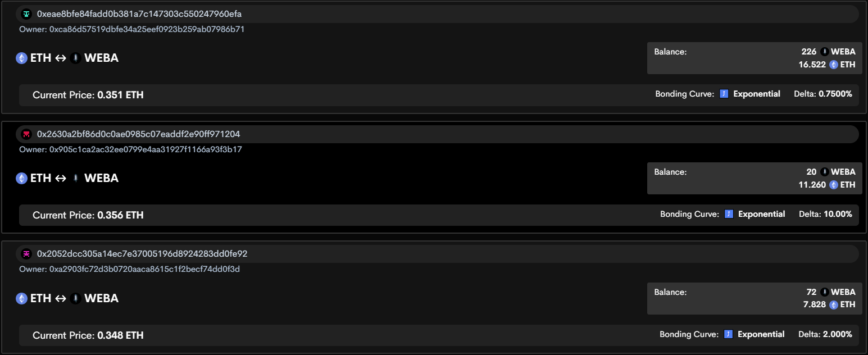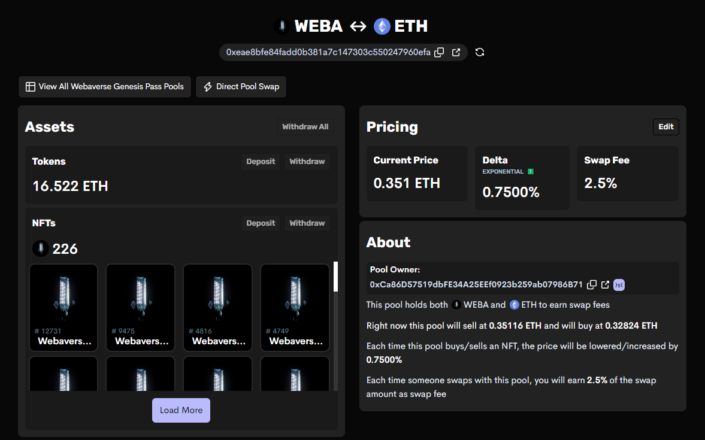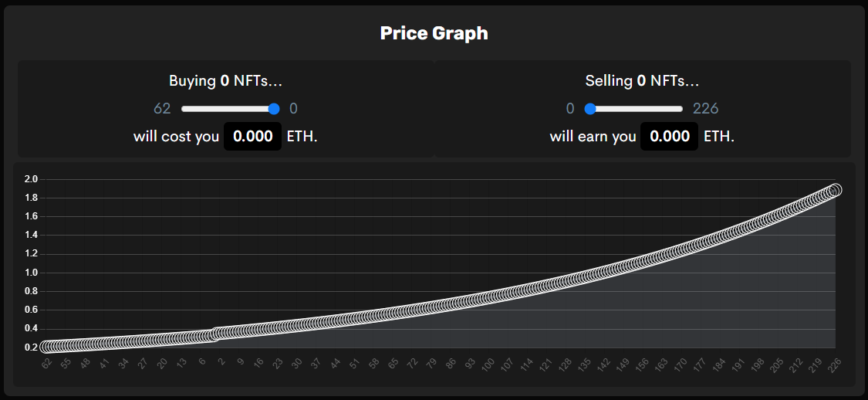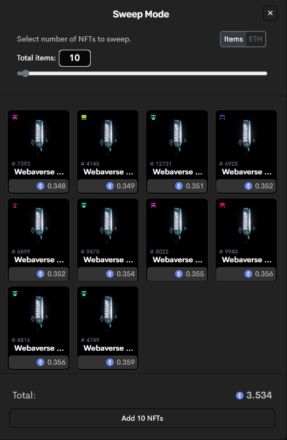How to trade NFTs on sudoswap

Important takeaways
- sudoswap is a decentralized NFT marketplace built on Ethereum.
- It adopts an automated market model similar to Uniswap, hosting liquidity pools for NFTs instead of standalone listings.
- sudoswap’s design provides several advantages for NFT trading over other venues such as OpenSea, which explains why its popularity has increased in recent weeks.
Share this article
Learn how to buy and sell NFTs on crypto’s first NFT automated market maker.
What is sudoswap?
sudoswap makes NFT trading even easier.
Launched in May 2022, Sudoswap is crypto’s first NFT automated market maker. The Ethereum-based platform works similarly to Uniswap, allowing users to safely trade assets through user-funded liquidity pools. However, instead of trading between two fungible tokens, sudoswap users can trade between NFTs and ETH.
At first glance, it may be difficult to see what advantages sudoswap offers the average user over conventional NFT trading platforms such as OpenSea, the world’s largest NFT marketplace with trading volumes that far exceed all competitors. Unlike OpenSea, sudoswap’s pools are completely decentralized and funded by the users. However, this does not mean that trading is free – the creator of the trading pool sets an exchange fee of a few percent paid to them from each successful NFT purchase or sale.
The fees generated when assets are traded through the platform’s pools go back to those providing NFT and ETH liquidity. This also means that sudoswap bypasses existing royalty fees placed on collections by their creators. Additionally, the lower the exchange fees on a specific pool, the more incentive users have to trade through it. This stimulates a “race to the bottom” for pool builders to offer the lowest fees, resulting in better prices for end users.
A final benefit of sudoswap is that it allows NFT owners to sell their assets immediately without having to wait for a buyer, which in turn improves liquidity and efficiency in the NFT market.
However, arguably the most innovative part of sudoswap is how it manages the value of the NFTs traded through its pools. The platform uses binding curves to automatically increase and decrease the bid and ask on each collection depending on how many NFTs are bought or sold. For example, when a user sells an NFT to a pool, the supply increases, the purchase price decreases slightly. Depending on the delta value chosen by the pool’s creator, the more NFTs sold, the lower the price per NFT will be until market forces find its true value. On the other hand, buying an NFT from a pool gradually increases the cost of subsequent purchases, keeping the asset’s price in line with demand.
Over the past few weeks, the number of users interacting with sudoswap has exploded. According to Dune data compiled by 0xRob, the protocol had an average of 36 users per day in July. A month later, sudoswap has registered nearly 2,000 daily users and a total trading volume of over $18 million.
Getting started with sudoswap
Trading NFTs on sudoswap is no more difficult than interacting with other automated trading platforms. As with interacting with any blockchain protocol, make sure you’re on the right page and connect to your Web3 wallet using the on-screen prompts.
Once connected, navigate over to the collections page to see which NFT collections users have created liquidity pools for. The largest and most active pools are for popular, well-established and frequently traded collections – don’t expect to find pools for smaller and more obscure projects. After finding a pool to trade, click on it, then navigate to the “pools” tab. This will show the user-created pools that offer NFTs from the pool, how much liquidity there is for each one, the type of bond curve used, and the Delta value (how much sales and purchases affect the price of NFTs in the pool). We will be using the Webaverse Genesis Pass collection for this demonstration.

Most collections have one main pool where most of the liquidity is concentrated. However, it’s worth checking if there are other pools that offer lower exchange fees – especially if you’re looking to buy NFTs from higher value pools like Bored Ape Yacht Club or 0xmons. For Webaverse Genesis Passes, we are looking at the main pool with the liquidity of 226 NFTs and 16,522 ETH.

Here we can see the current price the pool is selling an NFT for, the Delta (the amount NFT sales and purchases move the sale price), and the total exchange fee charged by the pool’s creator. If we scroll down, we can also see a graph that gives a visual representation of the pool’s binding curve. Moving the sliders on the buy and sell side can simulate how buying or selling more NFTs from the pool will increase or decrease the price and how much it will cost.

As pools increase the price of NFTs when they sell them, it is often better to use multiple pools when buying multiple NFTs. sudoswap’s built-in “Sweep Mode” can be used to find the best combination of purchases. For example, if we wanted to buy 10 Webaverse Genesis Passes, the cheapest option would be selected for the first purchase. However, this will increase the price of other NFTs in the corresponding pool, meaning it may be cheaper to buy from other pools before returning to the first pool.
The same principles for buying multiple NFTs apply when selling them. If we needed to sell more NFTs from a pool quickly, we could probably get a better overall price by simply selling NFTs to individual pools instead of selling them all at the same.

It is also worth noting that users can choose the exact NFT they receive when buying NFTs from sudoswap pools. Although this is not particularly important for collections like the Webaverse Genesis Pass where each NFT is the same, it affects collections of varying rarity. This is because it gives buyers a chance to buy NFTs with rare properties near the collection’s floor price. Meanwhile, NFT holders looking to sell rarer pieces may find that they can get a better price for their grails on other marketplaces like OpenSea.
While sudoswap is still in its infancy, it could potentially revolutionize NFT trading. Members of the NFT community have already begun experimenting with different areas of use for the protocol everything from raffle systems to GameFi marketplaces. At the same time, speculators hope to exploit the hype with derivative projects such as Sudo Loot and Sudo Inu. While it is unclear whether sudoswap will host more extensive collections in the future, it may not matter. It has already pushed NFT trading forward and looks set to have a bright future.
Disclosure: At the time of writing this piece, the author owned ETH and several other fungible and non-fungible cryptocurrencies.























